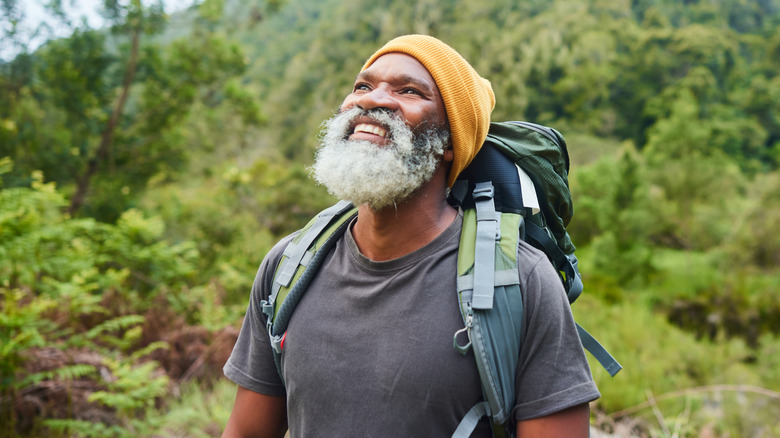When hiking in nature, the first principle of outdoor ethics is to leave no trace behind. But as the classic hiker’s saying goes, “Leave nothing but footprints and take nothing but pictures” — in other words, litter is a no-no, but leaving some shoe marks behind is A-OK and may even help save your life.
Regardless of how experienced you are or how thoroughly you plan, anyone can get lost when out on the trails, especially in an unfamiliar area. Footprints in the dirt or mud could come in handy if you need to retrace your steps. And if things truly go awry, your shoe impressions could help rescue teams locate you more easily.
So, how will they know which prints to look for? The experts at West Virginia K-9 Search and Rescue, Inc. shared a genius tip in a Facebook post: make an impression of the bottom of your shoes using aluminum foil. All you do is place a soft towel on the ground with a clean piece of foil on top. Then, step on the foil to leave a footprint with all the grooves and markings of the outsole. Once you have a good impression, leave the piece of foil in a visible place, such as on the dashboard of your car, before starting your hike.
Your clothing can keep you from getting stranded on a hike

The aluminum foil hack can help rescuers identify your footprints in a pinch, but, as one Facebook user asked on the post, what if the trail is too worn for your shoes to leave a mark? West Virginia K-9 Search and Rescue, Inc. explained that “an experienced and trained tracker should still be able to locate your tracks. Combine with trained K9s and experienced handlers, the probability of success is higher.” Put simply, even if you can’t easily spot your own footprints, experts likely can.
However, you can also rely on other clothing items to help rescuers locate you in an emergency. Specifically, the professional search team suggested leaving scent articles — clothing items that carry your distinct smell — near your car or campsite. Choose a garment, such as a hat or shirt, that only you’ve worn, and place it in a sealed bag with your name. Then, if you go missing during your hike, sniffing dogs can smell the garment and follow the scent along the trail.
Finally, select your hiking clothes carefully before venturing out. Ditch the camouflage gear and opt for bright clothing instead, as the American Hiking Society recommends. A colorful hiking backpack or reflective jacket could help rescuers spot you more easily between trees and other visual obstructions.
Other ways to track your hike

Footprints and clothing are helpful, but don’t just rely on these methods to stay safe while hiking. One of the most important steps you can take is to keep others informed of your hike. Download an app, such as Topo GPS, that allows you to plan and share your routes digitally, or buy a GPS device that updates your loved ones with your whereabouts. Keep in mind that some trails have a spotty signal, so it’s a good idea to communicate ahead of time, explaining where you plan to go and what time you intend to return home.
Once you’re out for your hike, stay on designated trails when possible. Even if you’re curious about an off-the-beaten-path spot, it’s wise to stay on marked paths to remain on course and easily retrace your steps if needed. If trails aren’t easy to identify, or if they branch off into multiple directions, tie a flag or string around nearby trees to identify your path, but make sure to return and collect the markers before you head home (remember, leave no trace!).
If you do get lost on a hike, stay put and call for help. As Devin Hiemstra, an experienced volunteer at Tahoe Nordic Search and Rescue, told Outside, “We always think we can trace our footprints or get to a better spot, but often we end up getting ourselves more lost or to a worse spot to be found.”

